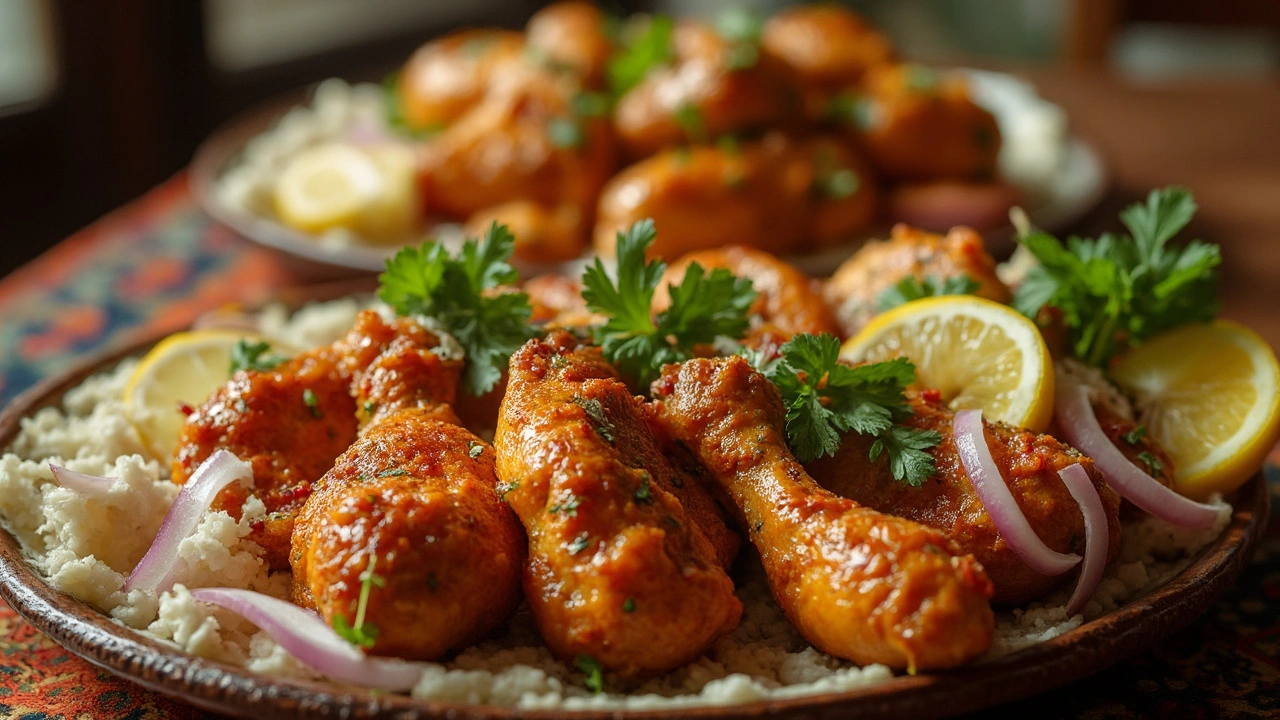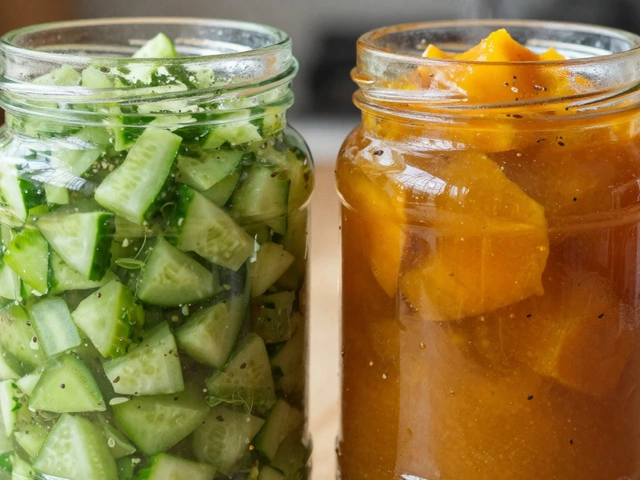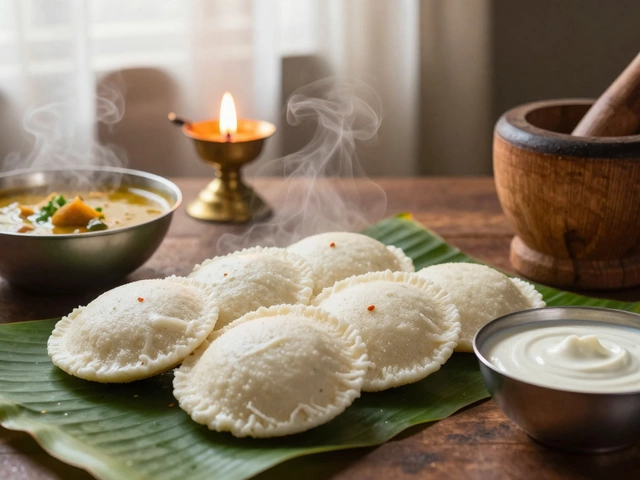Ever opened the fridge, ready to marinate chicken for tandoori night, and realized you’re out of yogurt? It happens—especially with kids like Jasper raiding for snacks and Darren using up the last bit for smoothies. But staring at a jar of mayo, you might wonder: Can this creamy standby do the job?
First thing, mayo and yogurt both pack fat and tang, but they’re definitely not twins. Yogurt gives tandoori chicken that signature tenderness and subtle tang. Mayo, on the other hand, is richer and a bit heavier, since it’s mostly eggs and oil with vinegar or lemon juice kicked in. So if you use mayo, you’re looking at a different vibe—maybe a little silkier, but not quite as light or zingy.
Still, mayo can rescue you in a pinch if you play your cards right. You’ll want to tweak your spices and maybe even add a fresh squeeze of lemon to get closer to that classic flavor. If you’re after crispy, juicy chicken without dragging Jasper to the store, mayo does more than just substitute—in some ways, it gives you a shortcut. But let’s break down how to actually pull this off, and what to expect when you switch up these creamy staples.
- Why Yogurt Marinades Matter
- How Mayo Acts as a Marinade
- Texture and Flavor Differences
- Quick Tips for Mayo-Based Marinades
- What to Expect While Cooking
- Tandoori Chicken Variations Using Mayo
Why Yogurt Marinades Matter
Yogurt is a staple in tandoori chicken recipes for a reason. It isn’t just about the tang; there’s actual kitchen science happening. Yogurt is acidic, but it’s much gentler than lemon juice or vinegar. That means it softens the chicken by breaking down the proteins, but it won’t turn it mushy if you leave it marinating for hours, or even overnight. The result? Chicken that’s super juicy and tender, not rubbery or dry.
A lot of people skip the yogurt, thinking any creamy substitute will do, but yogurt is special. It’s got live cultures, which don’t just help with digestion; they keep the chicken moist. Plus, yogurt carries spices deep into the chicken instead of just coating the outside. That slow flavor infusion is what gives tandoori its wow factor.
- Yogurt’s lactic acid gently tenderizes meat without making it mushy.
- It acts as a base for spices like cumin, coriander, chili, and turmeric, mixing them into a smooth marinade that sticks to the chicken.
- Skipping yogurt usually means losing out on that classic tandoori flavor and texture.
If you’re curious about the difference yogurt makes, check out this basic comparison:
| Ingredient | Acidity Level | Main Function | Common Side Effect |
|---|---|---|---|
| Yogurt | Mild | Tenderizes, adds tang | Moist, juicy chicken |
| Mayo | Low to moderate | Adds fat, some tang | Silky texture, less tang |
| Lemon Juice | High | Strong tenderizer | Can make meat mushy |
So, when you’re after that authentic tandoori chicken experience, yogurt really is the backbone of the marinade. It’s what helps all those punchy spices hang on and turns ordinary chicken into something memorable.
How Mayo Acts as a Marinade
Mayo does more than just make sandwiches creamy—it pulls serious weight in a chicken marinade. The magic comes from how mayo combines egg yolks, oil, and a bit of acid (like lemon juice or vinegar). This mix coats chicken evenly, locking in juices and making the meat super tender during cooking.
The oil in mayo works like a shield, keeping chicken from drying out on a hot grill or pan. The egg yolks help the marinade stick to every nook and cranny of your chicken, so your spices don’t slide right off. The little bit of acid in mayo isn’t as tangy as yogurt, but it still does a decent job of breaking down some of those muscle fibers for a softer bite.
Here’s how mayo stacks up against yogurt in key marinade jobs:
| Marinade Task | Mayo | Yogurt |
|---|---|---|
| Keeps Meat Moist | Excellent—oil-rich barrier | Very good—moisture and acid |
| Tenderizes | Moderate—thanks to acid and fat | Strong—higher acid and enzymes |
| Sticky Texture | Very sticky (thanks, eggs) | Mildly sticky |
| Tangy Flavor | Mild, comes from vinegar or lemon | More pronounced, classic tang |
So, if you use mayo, you’ll notice your marinade clings better, but the chicken might not get that sharp, bright tang. To balance things, toss in extra lemon juice or a spoonful of vinegar for more zip.
If you’re marinating, try sticking your chicken in mayo for at least 30 minutes, but one to four hours is better for flavor. Some folks even leave it overnight, and it works fine—just don’t expect wild changes in taste, since mayo works mostly on the outside.
Bottom line: mayo is a handy backup for yogurt in tandoori chicken, giving you moist, flavorful bites and a smooth, even coating for your spices.
Texture and Flavor Differences
Here’s where things get interesting—swapping yogurt for mayo in your chicken marinade changes both the feel and the taste of your tandoori. Yogurt is naturally tangy and a bit tart. It usually has live cultures that break down proteins in the chicken, making it super tender. Mayo, though, is mainly oil and eggs, so it’s richer and doesn’t pack the same tang. That means your chicken ends up with a creamier vibe but might not have the same zing or deep tenderness you get with yogurt.
If you care about that classic lightness, mayo is heavier and can coat the chicken a bit more thickly. That’s not always a bad thing—some folks love extra juicy chicken with a little crust. It’s all about what you like. But the flavor profile will shift, too. Mayo has a subtle eggy taste, which means your spices need to work a bit harder to bring the tandoori punch. To help guide your swap, here’s a quick comparison:
| Feature | Yogurt Marinade | Mayo Marinade |
|---|---|---|
| Texture | Light, airy, soaks in easily | Thick, rich, gives a heavy coating |
| Tenderness | Very tender (thanks to lactic acid) | Some moisture boost, less break-down |
| Flavor | Tangy, a little tart | Creamy, mild, a bit eggy |
| Crispiness | Less crisp, more smooth | Can brown fast, crispier edges |
If you want to punch up that tang when using mayo, squeeze in extra lemon or add a dash of vinegar. Don’t be shy with your spices—mayo can mellow things out, so up your garam masala or chili powder game. And if you’re after tenderness, let the chicken sit longer in the marinade than you would with yogurt.
The bottom line: mayo gives you juicy, tender chicken, just with a different texture and taste. Some people even say it tastes closer to restaurant fried chicken. You lose that signature tandoori tang, but you get convenience and a creamy, rich finish. It’s really a tradeoff—so pick what works best for your dinner table.

Quick Tips for Mayo-Based Marinades
Using mayo as a chicken marinade isn't traditional, but when you’re stuck or just want something simpler, it totally works if you know a few hacks. Here’s what you should keep in mind for the best results.
- mayo works best when you stick to about 2-3 tablespoons per pound of chicken—just enough to coat, not drown.
- Mayo isn’t as tangy as yogurt, so always add a splash of lemon juice or vinegar to balance out the flavor.
- Don’t skimp on spices. The fat in mayo soaks up seasonings and makes the flavors pop. Think chili powder, garlic, ginger, and plenty of salt.
- Let your chicken sit in the marinade for at least 1-2 hours in the fridge. Any longer than 8 hours and things can get mushy, since mayo is a strong tenderizer.
- Mayo can brown quickly under high heat because of the oil and eggs. Start chicken on medium heat, flip often, and keep an eye out so it doesn’t burn before cooking through.
Here’s a quick comparison to help you adjust your plan on the fly:
| Characteristic | Yogurt Marinade | Mayo Marinade |
|---|---|---|
| Acidity Level | High (thanks to lactic acid) | Low (add more lemon/vinegar) |
| Main Fat Source | Milk fat | Egg & oil |
| Tenderizing Strength | Medium | High (don’t over-marinate) |
| Flavor Base | Tangy, fresh | Creamy, rich |
| Grill Browning | Gradual | Quick (keep heat controlled) |
If you want to bump up the Indian flavors, throw in some smoked paprika or a pinch of garam masala. And if you’re grilling outside, brush a little extra marinade on in the last few minutes for more flavor—just don’t use the stuff the raw chicken was soaking in. Freshly mixed is the way to go.
What to Expect While Cooking
Swapping mayo for yogurt in your chicken marinade definitely changes things at the stove or grill. Mayo handles heat differently—thanks to the egg and oil mix, your chicken might brown faster. Those oils love to sizzle, so keep an eye out to prevent burning, especially if you’re using a high-heat oven or grill.
Here’s what you’ll notice:
- Color Change: The marinade sticks a little thicker, and as it cooks, the chicken gets a deeper golden crust rather than the light, slightly charred look yogurt gives. If you’re after those classic tandoori red vibes, add extra paprika or food coloring.
- Texture Notes: Mayo helps seal in moisture, so your chicken turns out juicy, but it won’t have that tangy fork-tender bite you get with yogurt. The texture is a bit creamier and richer—think rotisserie rather than true tandoori.
- Sizzle Factor: Mayo creates more splatter. I’ve learned to lay down foil or use a splatter guard just to avoid scrubbing the stovetop for half an hour afterward. Trust me, it’s worth the little prep.
If you’re grilling, place the chicken over indirect heat for the first few minutes. Once the outside sets, it can take direct heat without the marinade burning up. In the oven, stick with a lower rack, around 400°F. Here’s a quick comparison for times and temps:
| Method | Yogurt Marinade | Mayo Marinade |
|---|---|---|
| Grill (medium-high) | 8-10 min per side | 7-9 min per side (check earlier) |
| Oven (400°F) | 22-25 min | 20-23 min (watch for browning) |
Always double-check the thickest part: your chicken is good to go at 165°F. Use a meat thermometer to be sure—especially since mayo can make things look more done on the outside than they really are. If you’re basting, keep it light: mayo-based sauces burn fast. I usually skip a second coat and just brush before cooking.
Tandoori Chicken Variations Using Mayo
So, how can you shake up your tandoori chicken recipe using mayo? Turns out, you’ve got options. Swapping in mayo opens the door to both easy fixes and some unexpected flavors.
Let’s talk basics: For a quick, weeknight version, mix mayo with all your go-to spices—think garam masala, cumin, coriander, and smoked paprika. Toss in minced garlic, grated ginger, and a good squeeze of lemon to punch up the tangy notes that yogurt usually brings. Don’t forget salt and chili powder for kick. You’ll want about a quarter cup of mayo for every pound of chicken, give or take based on how saucy you like it.
- If you want a flavor closer to the original tandoori, use half mayo and half sour cream. Sour cream steps in to mimic yogurt’s signature tang.
- Trying to cut the heaviness? Add a splash of buttermilk or a spoonful of Greek yogurt (if you have a bit left)—it helps balance the rich mayo.
- For a spicy twist, blend mayo with a tablespoon of hot sauce or a dollop of prepared harissa before marinating.
- If your family’s into garlic (Jasper definitely is), stir in roasted garlic paste for a mellow, deeply savory flavor.
Cooking with a mayo-based marinade works especially well with oven-baked or air-fried chicken. Because of the higher oil content, you get a slightly crispier outer layer, almost as if you brushed on a thin layer of butter. Grill masters—just watch the heat, as mayo can brown quickly if it’s too hot.
If you’re experimenting, here are two go-to combos I’ve had the best luck with:
- Mayo & Spice Mix: Mayo, garam masala, smoked paprika, turmeric, garlic, fresh lemon, and a pinch of salt. Simple, bright, delicious.
- Mayo & Cilantro-Lime:
- Mayo, a small handful of chopped cilantro, juice of a lime, ground cumin, and green chili paste.
Each mix clings nicely to the chicken and pokes a little fun at tradition, without giving up that big, bold tandoori flavor. If you’re new to mayo as a marinade, start with skinless, boneless thighs—they’re forgiving and soak up flavors fast. Whether you’re out of yogurt or just up for a change, this is a quick way to keep your kitchen inventive and your meals interesting.


